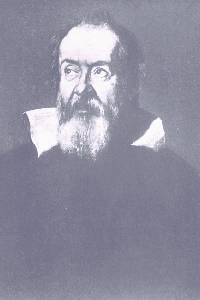
Ever since the late 1700s when John Mitchell utilized Newton's theory of gravity to describe the criterion of black hole formation for massive stars, scientists have been drawn to the physics of black holes. That's not to say that other members of society aren't curious about black holes; however, self-preservative fears of doom and destruction that lead to irrational attempts to prevent the building of magnificent scientific facilities, like the Large Hadron Collider (LHC), thwart the efforts of the truly inquisitive to truly understand the greater mysteries of the cosmos. Truth be told, the idea that there are objects in the universe that wander around devouring everything in their vicinity -- including light -- and are virtually invisible, is absolutely terrifying. Realistically though, the Earth is in no immediate danger from black holes in the neighborhood, astronomically speaking. Besides, Mitchell's supposition that Newton's theory of gravity could be used to accurately describe the formation of a black hole through stellar collapse, proved to be incorrect because Newton's work is only capable of accurately describing motion/forces of objects where velocities are significantly smaller than the speed of light. It was Einstein's theories of relativity, where Newton's theory of gravity is replaced by the warped fabric of spacetime, that allowed for an accurate description of black hole formation to become manifest.
Unlike Newtonian physics, Einstein's theories are able to describe motion of objects that are traveling at a significant fraction of the speed of light -- a critical component to understanding why a black hole is "black." Through the work of various scientists and the use of relativity, the idea of Mitchell's that light cannot escape a black hole because the escape velocity (the velocity an object must have to successfully leave the planet/moon/star it is on or near) required to leave a black hole exceeds the speed of light, and as most of you probably know, means that nothing can escape since speeds faster than light are deemed impossible. Researchers also determined that the point beyond which the escape velocity dips below the speed of light once more has a definite relationship to the mass of the black hole entailing a relatively simple calculation of the Schwarzschild radius, or more commonly, the radius of the event horizon.
Despite all of the new information gleaned about black holes from Einstein's theories, the mystery actually deepens once crossing the event horizon because the known laws of physics -- including those of both Newton and Einstein -- break down. The point at which the physics break down is referred to as the singularity of the black hole, a point of great interest to many scientists. New research from scientists at the Niels Bohr Institute published in the scientific journal,
Physical Review Letters, indicates that the mysteries of the black hole may be solvable in the confines of an aspect of string theory, known as branes. The researchers (Armas, Gath, and Obers) indicate that the properties of the black hole that they are investigating are specifically tied to black branes. These black branes, dependent upon their structural shape (see artist's rendition of a particular black brane structure -- a "blackfold" -- above, from
Science Daily), exhibit various properties. Interestingly, they have found that these black branes, and therefore black holes, have characteristic properties of both liquids and solids, making them quite elastic when folded. Also, when the black brane is a blackfold, a pressure generated electricity, or piezoelectric effect, is generated. This piezoelectric effect is responsible for creating charged poles at each end of the string which the black brane consists of, and allows the researchers to calculate both monopole and dipole moments of the black branes. According to the author on Science Daily, "[b]lack holes are predicted by Einstein's theory of gravity [and] [t]his means that there is a very surprising relationship between gravity and fluid mechanics and solid-state physics."
Obviously, further research into this area is necessary to fully understand and appreciate the complexities of a relationship between the most massive objects in the universe and the theoretical components of string theory; however, the researchers assert that these new theories will not only give us meaningful information with which to understand black holes, but also give us greater insight into another death throe of the stars.... neutron stars.
For those of you who would like to read more about this, below are the sources I used in writing this blog. Be forewarned, the article published in Physical Review Letters is extremely technical with advanced mathematics, but for those like myself who can decipher even a small portion of their work as it is presented, it is a short but informative read. The article from Science Daily is much more readable, as the author has done a good job of summarizing the key points of the journal entry without scaring the general reader with the technicalities. Oh and for those of you on social media, I found out about this article from one of the many scientific pages I follow on Facebook... see, it can be used for something worthwhile!
Sources:
- Fix, John D. Astronomy: Journey to the Cosmic Frontier. 5th ed. Dubuque, IA: McGraw-Hill, 2008. 484-90. Print.
- Black Branes as Piezoelectrics
- http://www.sciencedaily.com/releases/2012/12/121211112959.htm
- The Universe


